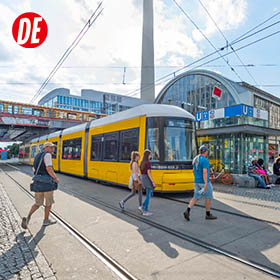Heroes' Square
A Kingdom With Its Many Heroes
Heroes' Square Budapest was built to commemorate the 1,000th anniversary of the foundation of the Hungarian state. The Millennium Monument and the curved colonnade in the center of the square contain numerous statues of Hungarian kings and heroes. The Hall of Art Budapest, the Museum of Fine Arts, and the City Park are located around the square.
At the northernmost end of Budapest’s famous Andrássy Avenue, lies the Heroes’ Square (Hősök tere), built for the 1000th Anniversary of the Founding of Hungary, which is the venue for many major events.
The Millennium Monument in the center is the focal point of the Heroes’ Square, with a 36-meter-tall column topped by a bronze statue of the Archangel Gabriel, holding the Hungarian crown and scepter, symbolizing the country’s Christian faith. At the base of the monument are the seven chieftains of Magyar tribes who opened a new chapter of Hungarian history in 896 AD when they came to settle on the site of today’s Budapest.

Manywhere Trivia:
Historians have debated whether the Hungarians are descended from the Huns, but the seven statues in Heroes’ Square do not include Attila the Hun, the Scourge of God.
Behind the monument is a curved colonnade, with 14 Bronze Statues Inside all based on famous Hungarians, including King Stephen I, King Béla IV, King Matthias, and the Hungarian national hero Lajos Kossuth.
There are two neoclassical buildings on the north and south sides of the square, namely the The Hall of Art Budapest and the Budapest Museum of Fine Arts, which has a collection of more than 100,000 valuable pieces, including ancient Egyptian art. The Budapest City Park, located behind Heroes’ Square, is a vast area with a boat pier, an amusement park, and a zoo, as well as the largest medicinal bath in Europe, the Széchenyi Thermal Bath, which is a favorite destination for locals and tourists.
Tags:
Related
Santa Maria del Popolo360
Works of Great Art MastersGuangzhou Chimelong Paradise360
Top Amusement Park in ChinaThe Venetian Macau360
Venice in MacauAncient Gate And City Wall Of Chiang Mai360
Defending Ancient Lanna KingdomSt. Mark's Square And St. Mark's Basilica360
100 Meter High Landmark Clock TowerMitsubishi Minatomirai Industrial Museum360
Touching the Cutting-edge TechnologyCharlottenburg Palace - New Pavilion360
Summer House in the Palace GardenKawaguchi Asama Shrine360
1,000 Year Old Seven SequoiasThe Palace Museum - Meridian Gate And Square360
The Magnificent Wumen GatePeople in Night City 2360
The Mysterious Guest StarThe Palace Museum - Hall of Mental Cultivation360
Yangxin PalaceCanals Of Amsterdam360
Over 100 kilometers of Water Network





























No comments yet, post the first one!